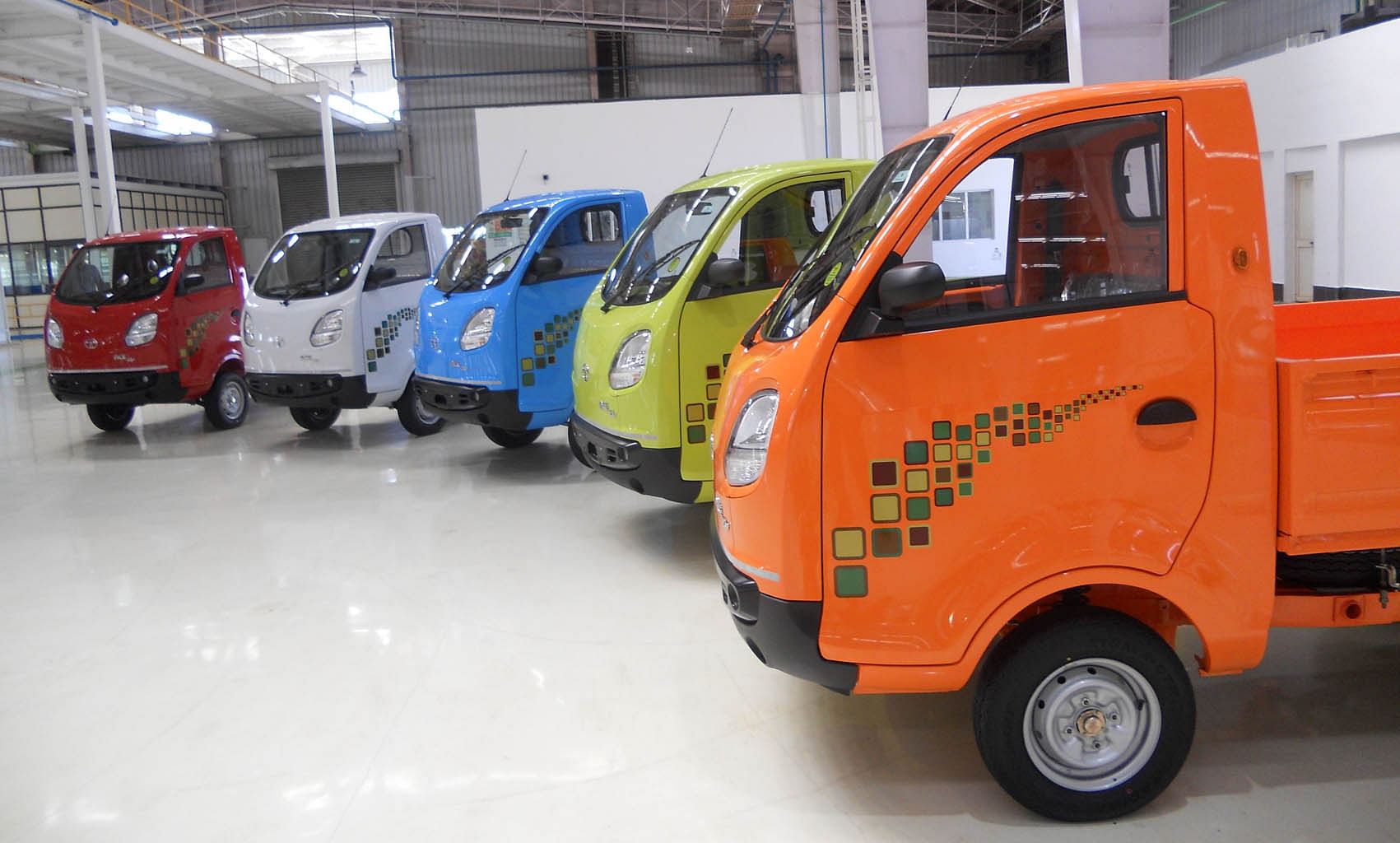'We need the government to start spending on infrastructure like road, ports and power.'
Ravi Pisharody, Executive Director, Commercial Vehicle Business Unit, Tata Motors, speaks to Jaishankar Jayaramiah on the improved sentiment in the CV market and why he feels growth will return to the small CV segment.
Ravi Pisharody, Executive Director, Commercial Vehicle Business Unit, Tata Motors, speaks to Jaishankar Jayaramiah on the improved sentiment in the CV market in India and why he feels growth will return to the small CV segment.
What is the current market share for Tata vehicles in the Indian CV segment and how do you see it growing?
Our overall market share is between 50-55 percent. Tata Motors is the only player present in all segments like bus, MCV, LCV and SCV and it has the capability to drive up its growth.
How do you see the CV segment growing in India?
The CV market, particularly the 16 tonne-and-above category, is very critical. After two years, now this segment is recovering. The last peak for the industry was in 2011-12 and it slipped to the bottom in 2013-14. From 2012 to 2014, the industry declined by 40 percent, each year witnessing a 20 percent decline. In the last three months, it is looking strong with almost 40-45 percent growth.
What is your supply strategy under the Jawaharlal Nehru National Urban Renewal Mission (JNNURM) scheme?
We are expected to sell around 4,000 buses under the JNNURM-II scheme. It’s a one-season sale. The government announced the grant in March-April 2014. It was delayed due to elections; now the tenders have started and orders have come. We have started executing orders in January this year. The order execution for around 4,000 buses will be completed by May or June. In JNNURM scheme-1 in 2009-10, the company has supplied around 4,500 buses to various government transport corporations over a one-year period.
What expectations do you have from the Union Budget?
The Budget can talk about a few things but nowadays a lot of things get done before and after the Budget. If fuel prices remain under control, it will be a good thing because the transport sector is under lot of pressure. Most importantly, we need the government to start spending on infrastructure like road, ports and power. This will trigger a lot of movement for cement, steel, sand, aluminum and coal and that in turn will drive up the CV sector.
What is the level of current input costs and their impact on the CV production scenario?
Input cost also depends on the global demand-supply scenario. The fact is that demand was sluggish in the last two years. In such a situation, the input costs also remains under control or we try to reduce the input costs. Over the past two to three years, we have been pushing down the input costs. Some of the costs of steel, coal, aluminium, rubber (for tyres) depend on global prices. Currently, it is looking favourable because of not much demand.
What are the factors involved in SCV growth?
First of all, the small CV buyer is not so complicated. He is aware that if he buys his vehicle, he is his owner and can make money. Only thing he need is activities. Long-distance transportation will benefit the small vehicle sector too. If the load comes down, there is not much work for small vehicle. M&HCVs are a lead indicator. Now the M&HCV segment has started growing and we expect the SCV market to also grow.

What the future plans for the Ace Zip?
Tata Motors created the Ace in May 2005 and subsequently the Ace Zip went on to create new vehicle categories in India and is a clear indication of our understanding of customer needs and commitment to cater to them with safe, cost-efficient transport solutions.
Leading the segment with a large 78 percent share, the Ace Zip micro-truck offers a safer, more lucrative cargo option for the cargo carrier businesses. It has found acceptability from first-time buyers and is seen as a successful self-employment generation model. With the 100,000th rollout of this vehicle, we can confidently testify the value we offer to our customers. In the future we may export the Ace Zip in the future to some neighbouring countries.
RELATED ARTICLES
INTERVIEW: "EV Demand is Rebounding both in India and Around the Globe" - JLR's Rajan Amba
Jaguar Land Rover India MD Rajan Amba discusses the India–UK FTA, the company’s manufacturing plans, the upcoming Panapa...
TVS Celebrates 20 Years of Apache, Eyes Premium and Global Push
Marking two decades of its flagship performance brand, TVS Motor unveiled special anniversary editions on Saturday while...
Q&A: Mahindra's Nalinikanth Gollagunta on Upcoming Festive Season, 'Bold' Design Choices
Automotive Division CEO Nalinikanth Gollagunta says mid-teens growth is achievable with Roxx ramp-up, BEVs, and a resil...






 23 Feb 2015
23 Feb 2015
 4710 Views
4710 Views





 Prerna Lidhoo
Prerna Lidhoo


 Darshan Nakhwa
Darshan Nakhwa


